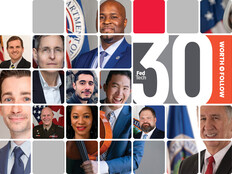USPTO Embraced a Culture Shift to Empower Employees
To help USPTO become more product-driven, Holcombe had to contend with the culture of the organization, which is renowned for employing very smart and ambitious people. To focus on results, USPTO strives to make sure that employees receive credit when warranted.
And instead of telling employees how to do their jobs, managers look to employees to learn how the jobs should be done, because they were hired for that expertise, Holcombe said.
“The fact is, if you’re expecting people to be accountable and you’re holding them to be creative and innovative, then they will be,” he said.
With this level of buy-in, USPTO has been able to engage employees in a culture shift where they are producing products rather than endlessly managing projects, Holcombe said.
“Culture eats strategy and policy for breakfast,” he warned.
DISCOVER: Why USPTO eliminated its final physical data centers.
Library of Congress Reorganized Teams Around Products
Janusz Wasiolek, deputy CIO for the U.S. Department of Justice’s Criminal Division, said driving his agency to increase value depends on three elements: trust, teamwork and transparency.
Stakeholders must trust the product owners, and they must form the right teams around products. Finally, the agency must support a culture of open communication around technology and its risks and challenges, he said, addressing the same panel at Imagine Nation ELC.
Prior to working for the Justice Department, Wasiolek served as an IT section chief for the Library of Congress. At the time, the library sought means to deliver more mobile content, perhaps using voice assistance devices like Amazon’s Alexa. That was a significant leap in capability for the library, Wasiolek recalled, and it had to reorganize its staff to achieve the goal.
“The first thing we did is we laid out all of our business functions into different bins, different buckets, and aligned different technologies and services into those buckets — essentially, enterprise architecture, but also, with the goal of understanding how much things cost,” he said.
The team conducted cost modeling to see how much funding might be required to achieve their goals.
“Every roughly five years, you’re investing the same amount of money into that tool as it cost to develop it. That gave us a really good number to start projecting what we could afford to do and tying it back to functions that we needed to perform,” he said.
Distilling that information into a product roadmap transformed the IT office at the Library of Congress, Wasiolek said. Within three years, the office grew from being very siloed to being open and transparent with communications along the product roadmap.
“Having a conversation around something very visual is powerful,” Wasiolek added. “I can talk to you all day about these broad concepts, but putting everybody’s function in an Excel sheet that you can share — that visual interface is very, very powerful because you can literally see your work on a roadmap.”












